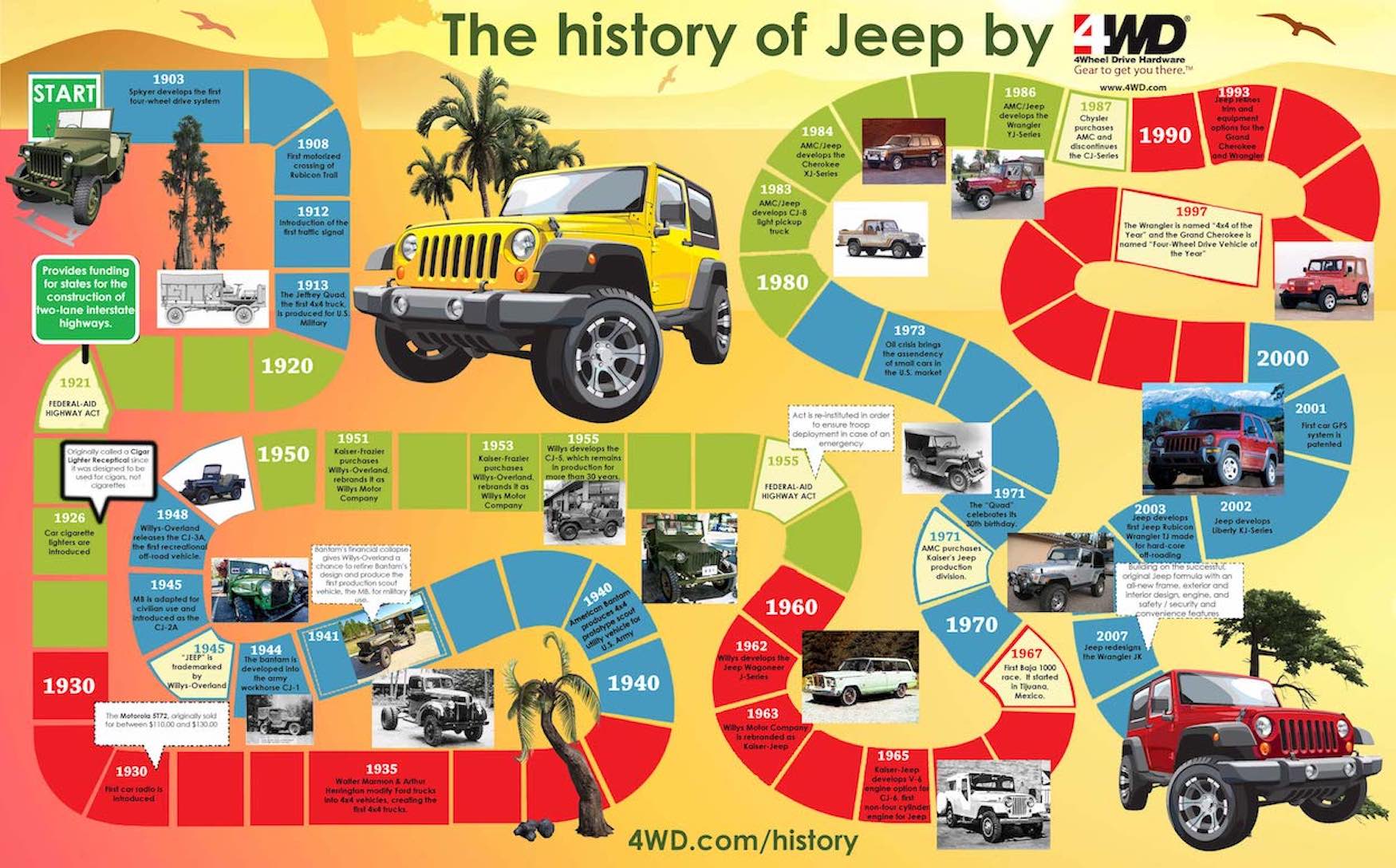
Jeep: The Road Less Traveled
Buckle up, adventure-seekers, because we’re about to take a thrilling ride through the remarkable history of the iconic Jeep. From the battlefields of World War II to the rugged terrains of off-road exploration, this is the story of a vehicle that has conquered hearts and conquered all obstacles in its path. So, fasten your seatbelts and prepare for an exhilarating journey through time!
The Birth of a Legend:
Our story begins in the early 1940s, during the crucible of World War II. The United States military found itself in dire need of a versatile, rugged, and maneuverable vehicle that could traverse any terrain with ease. In response to this demand, the American Bantam Car Company, along with Willys-Overland and Ford, took up the challenge and competed to design a small, lightweight, four-wheel-drive vehicle that would eventually become known as the Jeep.
While Bantam was the first to submit a prototype, it was Willys-Overland’s design, the Willys MB, that ultimately won the contract due to its exceptional performance and reliability. The term “Jeep” is said to have originated from the abbreviation “GP” (General Purpose) used by the military to refer to these vehicles. Over time, the term “Jeep” stuck, and it became synonymous with these agile and versatile off-road vehicles.
Warrior on Wheels:
During World War II, the Jeep proved to be an invaluable asset on the battlefield. Its rugged construction, excellent off-road capabilities, and ability to tackle any terrain with ease made it an indispensable tool for soldiers. Jeeps were used for a wide range of purposes, including transportation of troops, reconnaissance missions, towing artillery, and even as ambulances.
The Jeep’s reputation for reliability and durability was further solidified by its performance in harsh conditions. From the jungles of the Pacific to the deserts of North Africa and the snowy landscapes of Europe, the Jeep powered through, earning the admiration and respect of soldiers who relied on its versatility in the heat of battle.
Civilian Life Beckons:
After the war, thousands of surplus Jeeps were sold to civilians, sparking a newfound enthusiasm for these rugged vehicles. It didn’t take long for people to realize that the Jeep was not just a wartime hero; it was also a capable and fun vehicle for everyday use.
In 1945, Willys-Overland introduced the CJ-2A (Civilian Jeep 2A), the first mass-produced Jeep for civilian use. It retained the military Jeep’s essential features but added creature comforts like a tailgate, side-mounted spare tire, and improved seating. The CJ-2A became a hit among farmers, ranchers, and outdoor enthusiasts who appreciated its off-road prowess and versatility.
The Jeep Brand Expands:
Recognizing the growing demand for Jeep vehicles, Willys-Overland capitalized on its success and continued to innovate. In 1947, the company introduced the Willys-Overland Jeep Station Wagon, marking the birth of the first-ever all-steel station wagon. This marked a significant shift in Jeep’s offerings, catering to a wider range of customers looking for a versatile and practical family vehicle.
The 1950s brought further expansion with the introduction of the Jeep CJ-3B, which featured improved styling and performance. In 1963, the Jeep Wagoneer hit the market, establishing itself as the precursor to the modern sport utility vehicle (SUV). The Wagoneer offered a comfortable ride, luxury features, and the off-road capabilities that had become synonymous with the Jeep name.
Ownership Transitions:
Over the years, the Jeep brand changed hands several times, but its spirit remained intact. In 1953
, Kaiser Motors acquired Willys-Overland and continued to produce Jeeps with the same commitment to quality and durability. In 1970, American Motors Corporation (AMC) took control of the Jeep brand and expanded its lineup further, introducing the Jeep Cherokee and Jeep Grand Wagoneer.
In 1987, Chrysler Corporation acquired AMC, ushering in a new era for the Jeep brand. Under Chrysler’s ownership, the Jeep Wrangler was born in 1986, replacing the CJ series. The Wrangler embraced the heritage of the original Jeeps while incorporating modern advancements, capturing the imagination of off-road enthusiasts worldwide.
Into the 21st Century:
As we ventured into the new millennium, the Jeep brand continued to evolve and expand its lineup. In 1999, Daimler-Benz (now DaimlerChrysler) merged with Chrysler Corporation, and the Jeep brand became a part of the DaimlerChrysler family. This marriage brought forth new innovations, such as the Jeep Liberty and the Jeep Commander.
In 2009, Chrysler faced financial troubles and underwent a restructuring, leading to a partnership with Fiat. This collaboration gave birth to the Jeep Renegade and the Jeep Compass, which appealed to a new generation of urban adventurers seeking a compact and capable vehicle.
Today, Jeep stands as an iconic brand known for its ruggedness, off-road prowess, and unmistakable design. Models like the Wrangler and the Grand Cherokee continue to dominate the market, offering a blend of comfort, capability, and style.
Jeep’s Legacy:
The Jeep’s enduring popularity can be attributed to its ability to adapt and reinvent itself while staying true to its core principles. It has become a symbol of freedom, adventure, and the thrill of going off the beaten path. Jeep owners form a tight-knit community, proudly displaying their Jeep badges and sharing stories of their off-road escapades.
In recent years, the Jeep brand has expanded its global reach, with manufacturing facilities and enthusiastic fan bases around the world. From the challenging trails of Moab to the bustling city streets, the Jeep has left an indelible mark on the automotive industry and the hearts of millions.
As we conclude our exhilarating journey through the history of the Jeep, we can’t help but marvel at the enduring legacy of this extraordinary vehicle. From its humble origins as a military workhorse to its status as a beloved icon, the Jeep has conquered all obstacles, both on and off the road, reminding us to embrace adventure and take the road less traveled. So, dear reader, go forth and explore, for the spirit of the Jeep lives on, ready to conquer new horizons with its unwavering spirit of adventure.
